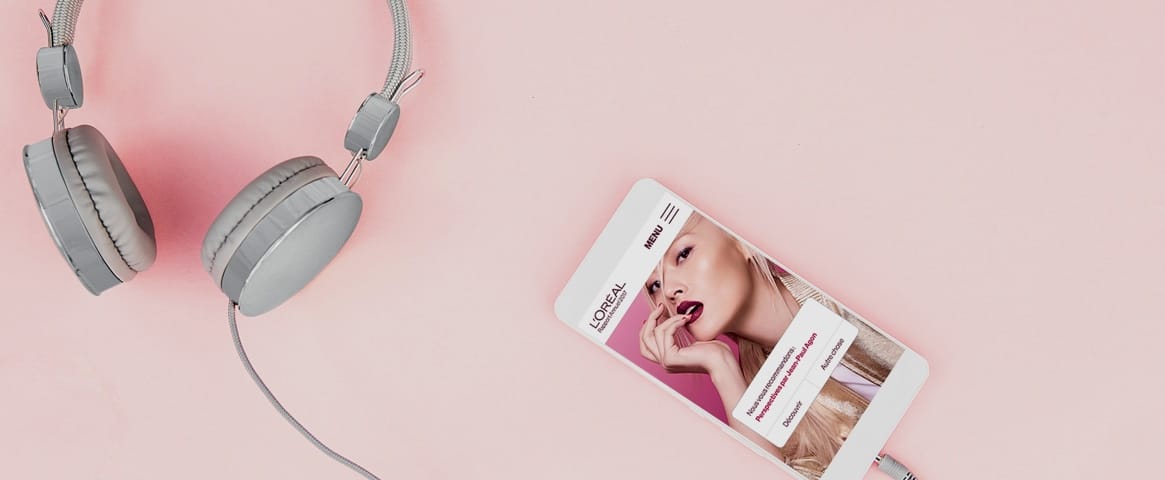Ingredients safety in beauty products

Three questions for Stéphane Dhalluin,
Head of Worldwide Safety Evaluation
What safety control steps are taken for ingredients at L’Oréal?
Stéphane Dhalluin : Before talking about safety control, we need to go over two key concepts: those of hazard and risk.
Despite what it may seem, for example, salt and sugar are harmful to your health if consumed in large quantities. However, at low doses, when seasoning a meal, they present no particular risk at all. And if, instead of eating them, we only touch them, they no longer pose any risk, as they do not enter the body. This is what is meant by the concept of exposure.
When it comes to cosmetics, we start by reviewing the intrinsic hazard for each ingredient by collecting all the available data (chemical family, purity, known toxicity, etc.). Then, we look at the final product, which contains the ingredient, and how it will be used: will the product remain on the skin, or will it be rinsed off? Will it be applied to a small area, such as the lips or the eyelids, or over the whole body? Will it be used every day, or only occasionally?
The combination of these two concepts (hazard and exposure) enables us to determine the dose at which there is absolutely no risk to health by using the ingredient. We then divide this dose by at least 100, to provide an additional safety margin.
Once each ingredient has been reviewed and the determined risk-free dose is divided by at least 100, we then evaluate the whole formulation. A formulation can contain as many as 30 ingredients, all used at well-defined concentrations. Through clinical trials, its tolerance is verified through dermatological and ophthalmological controls on volunteers. We always take the time to ensure the safety of our customers: therefore, it takes, on average, nine to 12 months to develop a product, or as long as 18 months for a baby product.
Finally, at L’Oréal, we have set up a worldwide a post-marketing surveillance network which screens the market and tracks the slightest adverse effect that could occur for a customer when using one of our products.
At the slightest mention of a question being raised, be it within the scientific community or in society at large, we systematically reassess our formulations to confirm that they are perfectly safe to use.
What standards does L’Oréal use to ensure the safety of its ingredients?
S.D.: At L’Oréal, we have the highest safety standards, because the health of our customers is our absolute priority.
Many of our researchers are also doctors, dermatologists or pharmacists and therefore they have taken the Hippocratic or Pharmacist’s Oath. The highest level of care is taken when developing our products, so that they do not pose any risk to human health. A team of more than 100 members of staff, including toxicologists and doctors work together, all around the world, to develop protocols and sign safety clearances. These toxicologists are committed and responsible.
We launch more than 7 billion products per year around the world, and we have never had to withdraw a single one of them due to a serious health issue, and this, in over a century of L’Oréal’s existence!
The cosmetics industry has made a concerted effort towards transparency and product labels have been listing all the ingredients they contain for many years now. Besides, it’s a highly-regulated industry: in fact, in Europe, cosmetics comply with the strictest of all regulations in the world. Did you know, for instance, that at least 100 quality checks are carried out before any marketing authorisation is given?
In some cases, we even go beyond the regulatory requirements. For example, with some groups, such as pregnant women or children, for whom the perceived risk may be higher, we sometimes avoid the use or reduce the concentration of certain ingredients, so they do not pose any risk at all.
Above all, we do not wait for problems to arise to apply a principle of anticipation to our formulations: this is why we spontaneously stopped using triclosan and diethyl phthalate several years ago… even though they were authorised, and well before they were publicly called into question.
What is L’Oréal’s position on controversial ingredients, such as parabens or aluminium salts?
S.D.: Firstly, let’s start by talking about parabens:
A poorly protected cosmetics product may lead to health risks for the consumer. Preservatives in general, and parabens in particular, play a vital role in preventing bacterial contamination. Did you know that bees produce methylparaben to prevent honey from going mouldy? This shows to what extent methylparaben is naturally harmless.
As with all the ingredients used by L’Oréal, the parabens that we use pose no risk to health. They are all authorised by the strictest regulations in the world, the ones in place in Europe. We are even more strict than the current norms call for, favouring the use of the least controversial parabens (ethylparaben and methylparaben).
Nevertheless, we are proposing “paraben-free” products for customers who are looking for them. We are ensuring that this information, while it is useful for the customer, is not derogatory for these preservatives, which are absolutely essential for other products.
Regarding aluminium salts, they are very effective against sweat and bad odours. They contribute to the hygiene and well-being of consumers.
As with all the ingredients used in L’Oréal products, they do not pose any risk to health. For our anti-perspirant products, the assessment of their safety is based on robust and complete scientific information, evaluated by independent experts. In addition, they comply with European norms and regulations, which are the strictest in the world.
The medical community has reiterated that there is no causal relationship between the onset of breast cancer and the use of aluminium salts, as they barely penetrate the skin.
However, we are proposing “aluminium salt-free” products for consumers who are looking for them. In addition, we are currently investigating alternatives to aluminium salts which could potentially be even more effective.
Thank you very much.
S.D.: Thank you too.



